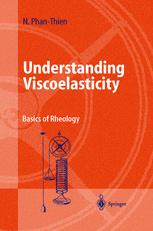

Most ebook files are in PDF format, so you can easily read them using various software such as Foxit Reader or directly on the Google Chrome browser.
Some ebook files are released by publishers in other formats such as .awz, .mobi, .epub, .fb2, etc. You may need to install specific software to read these formats on mobile/PC, such as Calibre.
Please read the tutorial at this link: https://ebookbell.com/faq
We offer FREE conversion to the popular formats you request; however, this may take some time. Therefore, right after payment, please email us, and we will try to provide the service as quickly as possible.
For some exceptional file formats or broken links (if any), please refrain from opening any disputes. Instead, email us first, and we will try to assist within a maximum of 6 hours.
EbookBell Team

0.0
0 reviewsViscoelasticity (or rheology) is a highly mathematical subject, interfacing several disciplines, from applied mathematics to mechanics and engineering. Other books on rheology are usually comprehensive to such a degree that students find it hard to isolate the important physical principles and develop good analytical skills for solving useful engineering problems. In this book, the necessary background for understanding viscoelasticity is covered; both the continuum and microstructure approaches to modelling viscoelastic materials are discussed, since neither approach alone is sufficient. The book starts with tensor notation, to give students the basic working tools, then addresses kinematics and constitutive equations, and ends with the constitutive modelling of polymer solutions and suspensions. It also includes a series of problems of graded difficulty. It is self-contained and ideally suited for a one-semester course on viscoelasticity.